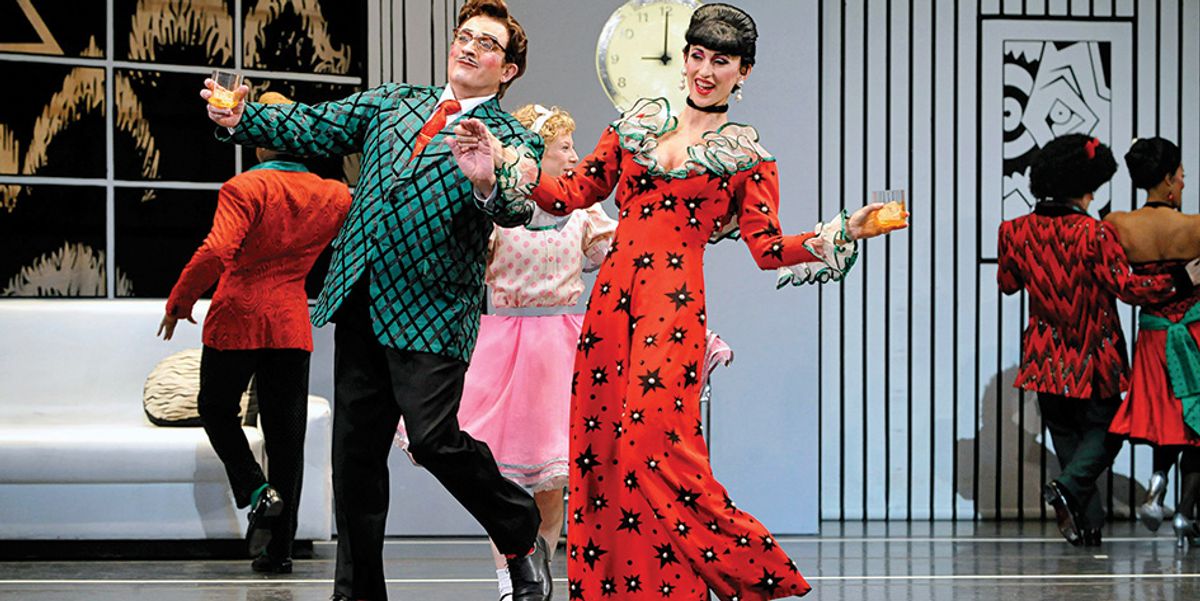10 Minutes With Mark Morris
Built to last, Mark Morris Dance Group’s
The Hard Nut returns December 10–18 for its 25th anniversary engagement, in the Howard Gilman Opera House at the Brooklyn Academy of Music. As gleefully irreverent as it is visually poetic and musically sensitive, Morris’ interpretation of The Nutcracker features, among its many memorable moments, gender-queer snowflakes and a Christmas party with no food, only alcohol.
The Hard Nut premiered toward the end of your time in Brussels, as director of dance at Théâtre Royal de la Monnaie. Did you always intend to keep it going somehow, to bring it back with you to the United States?
First of all, it’s lasted for 25 years because it’s very, very good. Which isn’t to say that there aren’t dances which have lasted forever, which are terrible. But no. When I left Brussels I didn’t know I would receive all of the physical properties for The Hard Nut, but we got an incredible deal to keep all those sets and costumes.
The Hard Nut conjures many distinctly American pop-cultural images, like soft-serve ice cream cones, Barbie dolls and G.I. Joes. Did those visual ideas come primarily from Charles Burns, the cartoonist, or from you, or…
It came from everyone. I sent everything—the music, the wonderful E.T.A. Hoffmann book upon which it’s based—to the whole team: costume designer Marty Pakledinaz, set designer Adrianne Lobel, lighting designer James F. Ingalls, and Charles. All of us together created this world. I can’t really say which ideas belonged to whom.
You’ve said the desire to choreograph
The Nutcracker goes back to when you were a teenager. Is there a production which for you was particularly inspiring?
Balanchine’s is very good, even though the first act is kind of boring. People will kill me for saying that. My favorite is probably The Nutcracker Suite—it’s not the full Nutcracker—from Disney’s Fantasia. It’s such incredible choreography, the animation is unbelievable, I love the musicality and just the imagination of it all. It’s miraculously good.
Many of the dramatic roles are closely tied to specific artists, perhaps most of all Kraig Patterson as the Housekeeper. Has it been difficult to recast any roles, or to watch certain artists retire them?
I’m not overly sentimental in that way. I don’t “see the ghosts of Christmas past” when I watch the piece. There’s a difference between history and nostalgia.
Children sing in the chorus for
The Hard Nut, but you don’t use them onstage. Did you get any pushback on that decision?
No. I do what I want, and I did not want to work with children.
You’ve performed so often in
The Hard Nut yourself. What’s that like?
Because I work with such extraordinary dancers, and because the music is so wonderful and so alive, it’s always very surprising and fun. I’m all about living audiences paying attention and watching living performers. That’s what I love. It’s also exhausting, of course, especially since I’m so old now. [Laughs]
It takes an extraordinary amount of cooperation between a lot of people, and a lot of alignment of politics and forces, for a production like
The Hard Nut to become a reality. Did you—
Right. It couldn’t be done today.
—did you have that sense in Brussels, of a limited window of opportunity?
I always think that. I did a big production this fall that opened at Cal Performances in Berkeley, Layla and Majnun, and that requires an enormous amount of trust in me, and responsibility on my part. Once something’s opened and it’s been successful, everybody wants it, but the danger, the gamble—and the interesting part—is supporting something new. Speaking of which: I have to go now, and I’m stopping my timer to let you know that we spoke for 39 minutes and 16 seconds, not just 10 minutes. Put that in.




